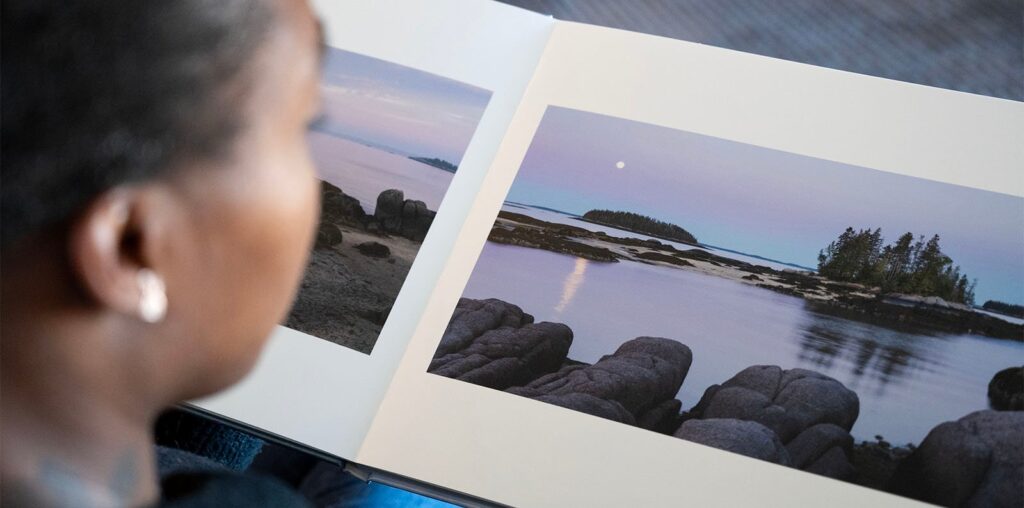![]()
WhiteWall’s new Coffee Table Book promises to be more than just another photo book. This is a lofty target, and through the use of premium materials and the attention to detail WhiteWall is known for, the company’s new offering hits the mark.
Full disclosure: This article has been brought to you by WhiteWall.
As all photographers know, photographs are special. They are meaningful and impactful, and they matter. To that end, how pictures are presented to the world matters, too. Here at PetaPixel, we have written at length about the value of printing, including within the context of WhiteWall’s various offerings. While matted prints hung on the wall are great and have their place, so too does a photo book.
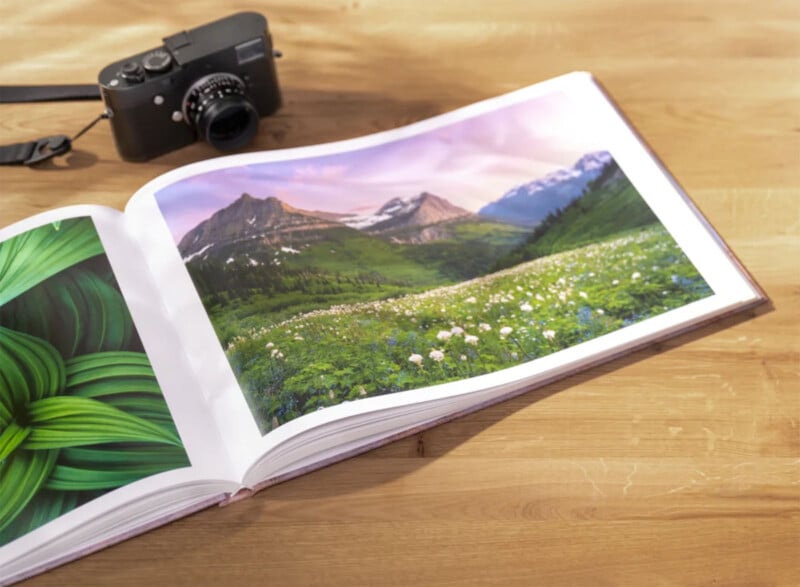
What WhiteWall’s prints and Coffee Table Books have in common is impeccable quality and top-notch materials. However, where they differ, and what makes a book such a compelling option for photographers, is that you can touch and interact with a book. It is meant to be held and touched. There is no substitute for that tangible experience.
As we approach the holiday season, a WhiteWall Coffee Table Book is the perfect gift for photographers to either give to their loved ones or give themselves — a chance to immortalize a photography project or take stock of the images that mean the most to them.
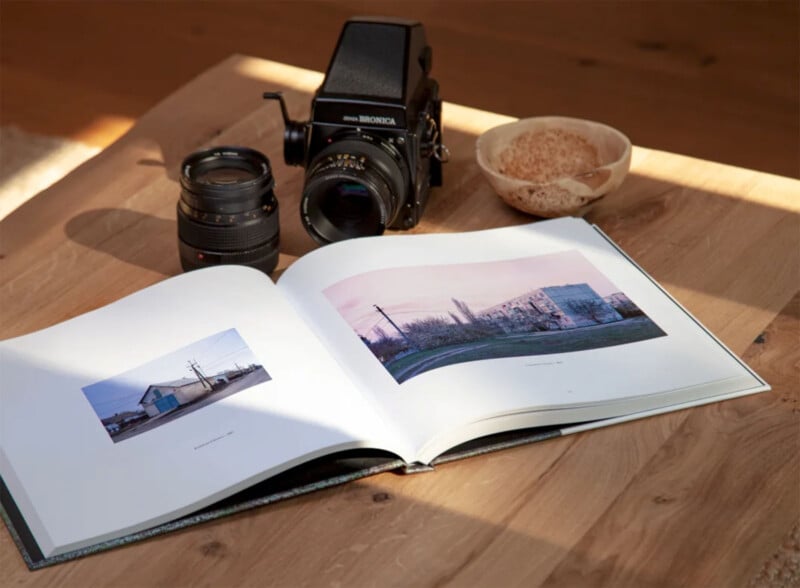
In that spirit of giving, I created a WhiteWall Coffee Table Book focused on my images captured in and around Stonington, Maine. I chose this theme because my dad and I have spent numerous cold, dark mornings over the past few years driving the winding, hilly roads from Bangor to the island of Deer Isle off the coast of Maine.
![]()
Photography has long been how we connect. We have done it together since I got my first camera as a kid. These days, I take many photos on my own and have solo adventures, but every photo trip to Stonington has been with my dad.
We each have unique stylistic and compositional approaches to photography and see the world differently. Still, all my photos from Stonington are of scenes we enjoyed together, even if our cameras caught the light differently.
When I saw WhiteWall’s new Coffee Table Book, I knew what I wanted to do with it. I wanted to have a permanent photo record of our trips to Stonington. While there are still plenty of shots I want to capture in the area with my dad, if I waited until I had every photograph I wanted before making a book, there would never be a book. There are always more photos to capture, after all. So, there’s no better time than now to do something special with your most precious images.
![]()
A High-Quality Photo Book Starts With High-Quality Materials
It perhaps goes without saying, but it should still be noted that a quality book requires papers, inks, and materials to match. In the case of the WhiteWall Coffee Table Book, considerable time and effort have gone into determining precisely what a high-end photo book requires.
The team researched extensively, including reading many excellent, acclaimed photography books, to find what worked best for professional photographers. An optional lay-flat binding? Check. Thick photographic paper with outstanding sharpness and color reproduction? Of course. Different types of paper and cover materials, including printed linen covers? You bet.

Granted, this level of detail and quality comes at a price, but there are plenty of places where people can get cheap photography books made. WhiteWall is not targeting that audience; it is targeting photographers who care deeply about how their work is presented. That is not to say that WhiteWall’s books are excessively pricey — they start at around $70 for the smallest format and 28 pages — but the focus is on delivering a professional look and feel, no matter which format, paper type, and cover material the photographer uses. Even the “cheapest” options would not look out of place on a bookstore shelf.
Speaking of paper, the backbone of any brilliant print, photographers have six options. The half dozen options are as follows: Inkjet glossy — Fedrigoni Symbol Freelife Gloss (200 gsm), Inkjet silk-matt — Inapa Galaxi Art Samt (170 gsm), Inkjet high gloss — Fedrigoni Symbol Freelife Gloss (200 gsm, plus high gloss varnish), Photo paper silk — matte — Fuji Crystal Archive Luster (368 gsm), Photo paper glossy — Fuji Crystal Archive Glossy (382 gsm), and Photo paper deep matte — Fuji Crystal Archive Velvet (370 gsm).
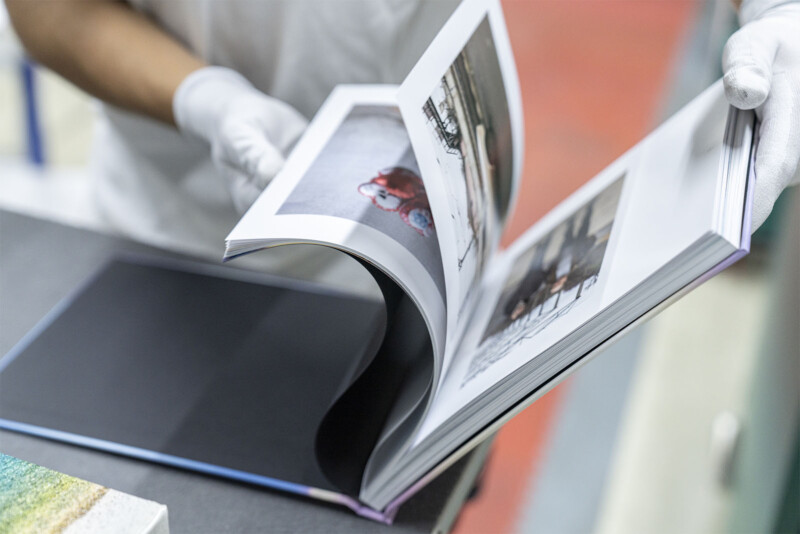
While each paper has its pros and cons, all are suitable for high-quality photo books, and each has been hand-chosen and repeatedly tested by WhiteWall before the Coffee Table Book’s release earlier this fall. WhiteWall offers a sample set, which includes samples of each paper and cover variations. This is $24.95, but you will be refunded 100% of the purchase price, excluding shipping, as a voucher for a future order from WhiteWall. The company highly recommends that photographers order this kit to ensure they pick the perfect paper for their photo book.
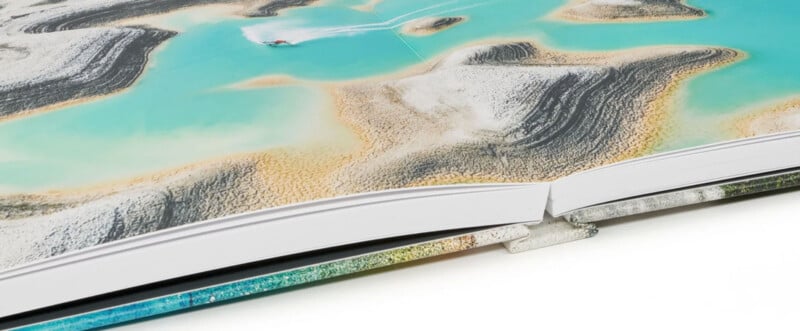

How to Make a Photo Book
While receiving my Coffee Table Book is a treat in itself, the process of making the book was a reward, too. It gave me the opportunity to go through my portfolio, revisit older images, and, ultimately, make hard choices concerning which photographs I wanted to include in my book and why.
As famed author Stephen King wrote in his excellent book about writing, On Writing, which offers lessons applicable to many other art forms, “Kill your darlings, kill your darlings, even when it breaks your egocentric little scribbler’s heart, kill your darlings.” It’s a bit more violent than I would put it — then again, I’m no acclaimed horror writer — but it is the most critical, painful, and ultimately beneficial part of making a photo book.
![]()
With “darlings” discarded and a slimmed-down collection of images in hand, it is time to decide, “How do I turn these photos into a book?” WhiteWall offers two methods. There is an online editor, which is very straightforward and includes easy-to-use templates and guides. There is also the option to upload a PDF book made in software like Adobe InDesign or Affinity Publisher. I opted to use WhiteWall’s online editor, which was really easy. Once you have laid out your book, you can save it and share it with others before making your final order, giving you a chance to get more feedback.
While every photo book is unique, WhiteWall offers some practical advice that applies to everyone. It starts with asking yourself an important question: What do you want to do with your Coffee Table Book?
![]()
![]()
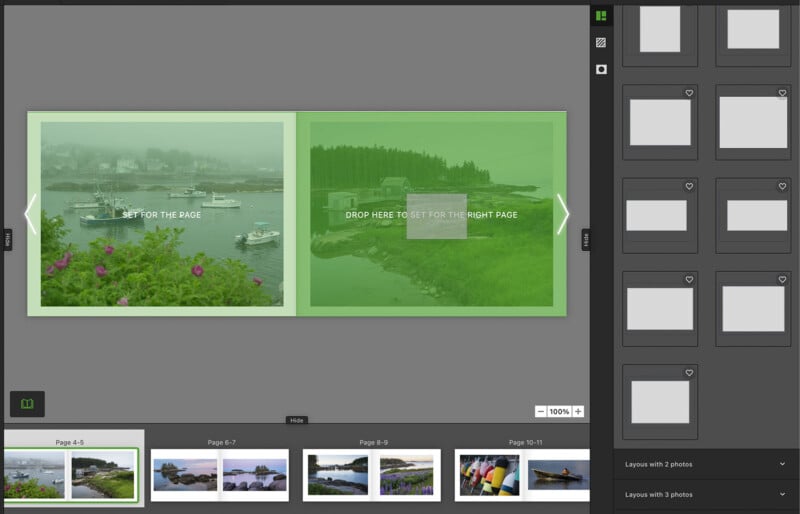
It can be a portfolio, a completed project, part of a project, a collection of images from a certain period, or photos that fit a unified theme. It can be almost anything, but the important thing is that you know what it is.
In my case, my book is a thematic collection of images from a specific place. I kept similar images together while providing a general progression of time from start to finish. The earlier pages focus on photographs shot at sunrise and during the early morning, and as you flip through to the end, sunset and nighttime come into focus.

I went with the largest size, the Portfolio A3 Landscape (15 x 11.4 inches), so many of the images are in landscape orientation, with some exceptions. Despite the large paper size, I mostly stuck with just one image per page. If you’re going to make a photo book, you should give your photos ample space to breathe — it is not about jamming as many images as possible into a book, but rather, picking the appropriate format to showcase every image in the best possible way.
Much like WhiteWall itself read many photo books to determine what options to offer photographers when making the Coffee Table Book, the company recommends that prospective customers do the same when deciding how to layout their book. There is nothing wrong with taking inspiration from seasoned professionals.
Ultimately, the “why” informs the “how.” Practical choices, such as the materials and layout, must be made, but these are relatively straightforward hurdles to clear once you determine what you want to accomplish with your photo book (and after browsing the sample book).
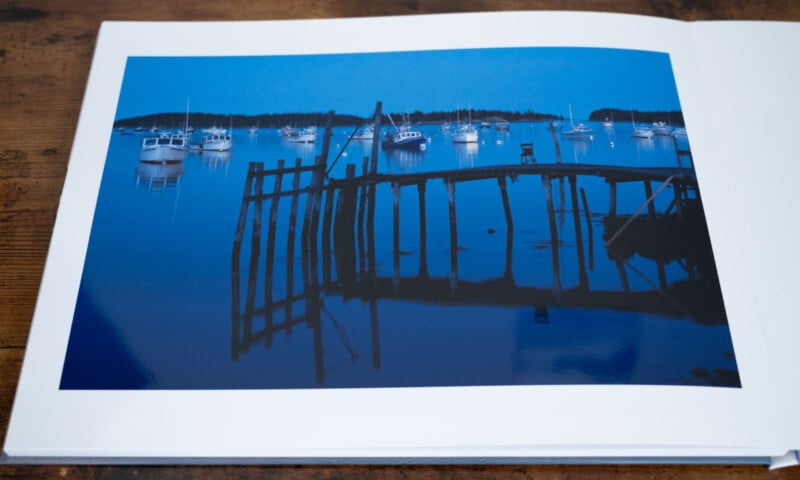

A WhiteWall Coffee Table Book Is Special
When a photographer determines that a photography book best fits their purpose and need, whether giving a personal and thoughtful gift, showcasing their work for strangers, or doing something special for themselves, quality is of utmost importance. The focus should always be on the photography itself, and the book should be the foundation to show the photography.
![]()
The WhiteWall Coffee Table Book has no WhiteWall branding, inside or out, and the binding and paper quality are exceptional. The book is an incredible, interactive showcase for your images that you can touch, feel, and explore time and again.
Photographers spend so much effort on capturing beautiful images it makes perfect sense to care just as much about how to present them, and a book is an incredible way to do that.

Creating a WhiteWall Coffee Table Book of my favorite photos from Stonington has allowed me to recapture moments and memories and share them in a new, dynamic way that my family and I can touch and enjoy. Seeing my photos come to life in a professional-quality book is a remarkable gift every photographer should consider giving themselves and the people they love.
Full disclosure: This story has been brought to you by WhiteWall.
Image credits: Photographs by Jeremy Gray and WhiteWall.
